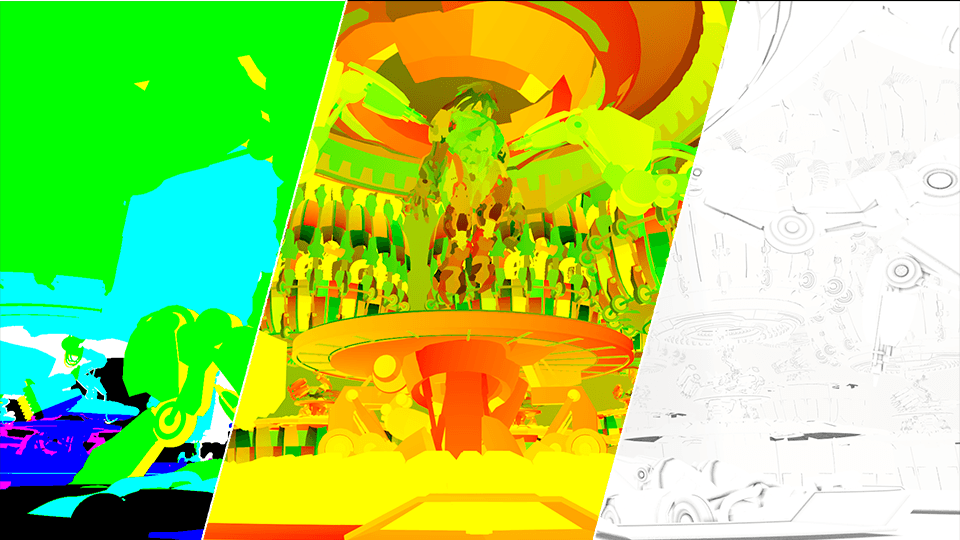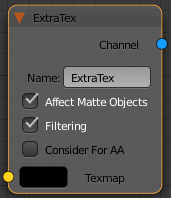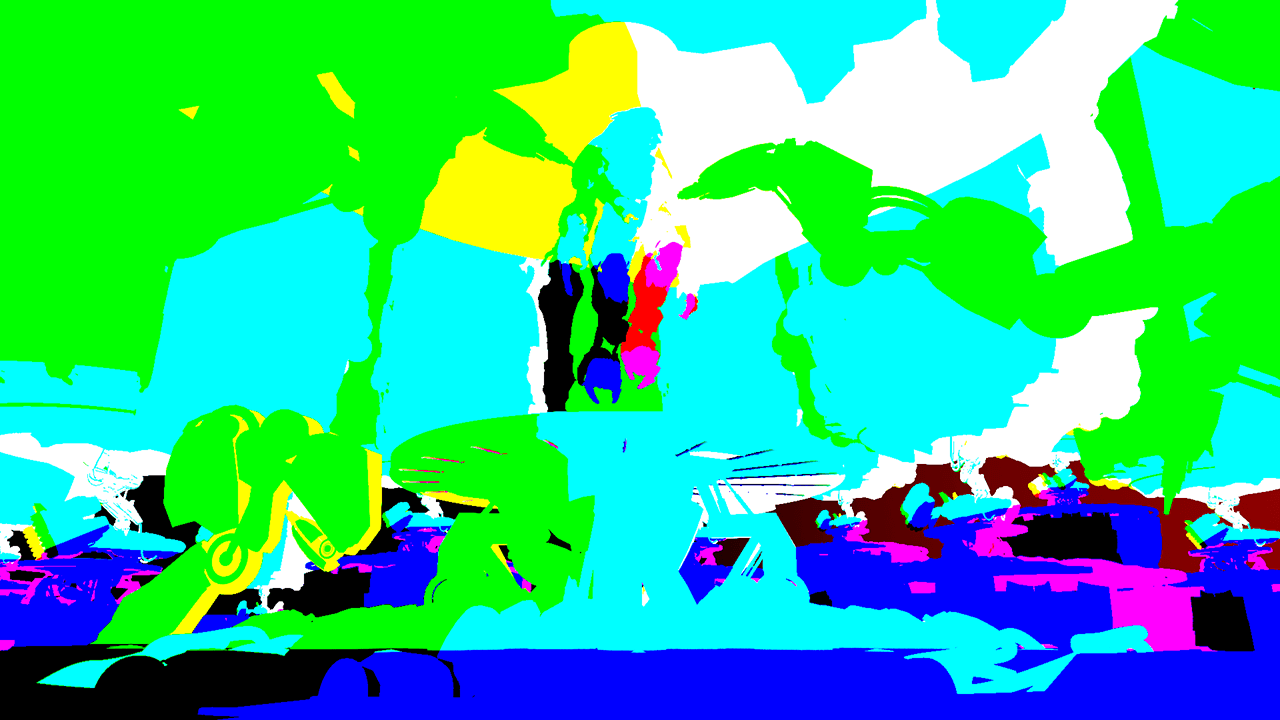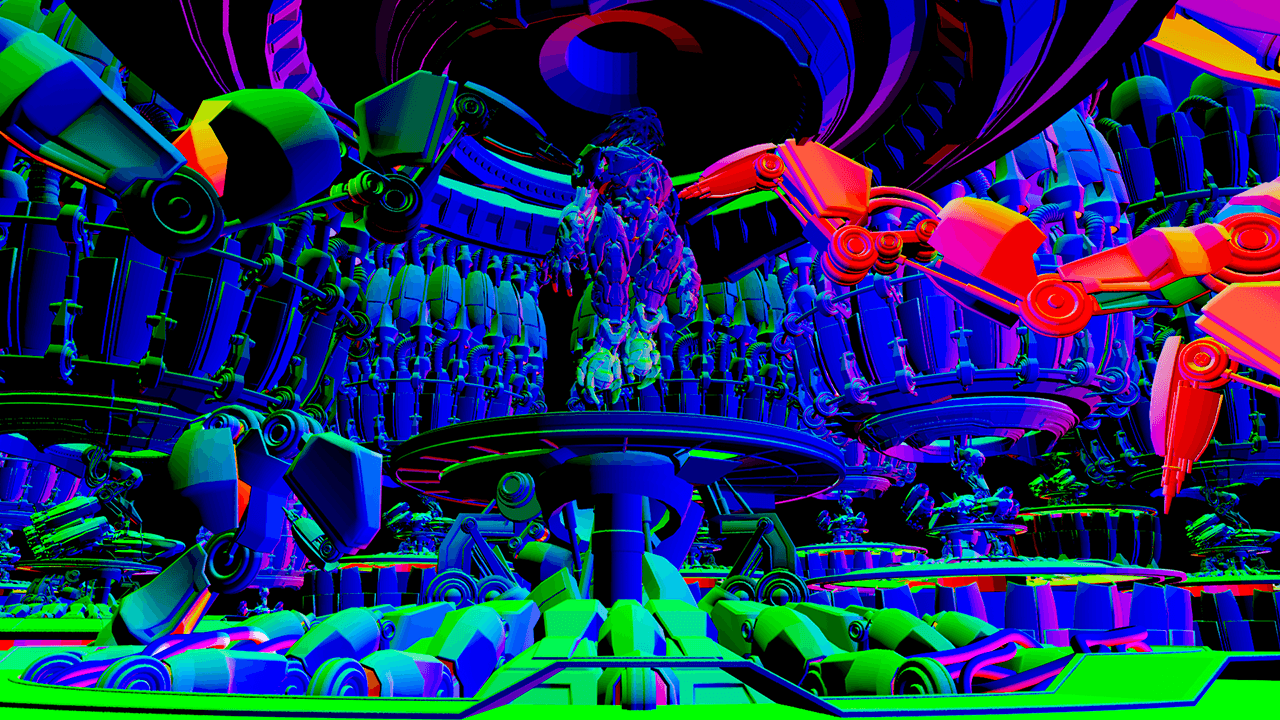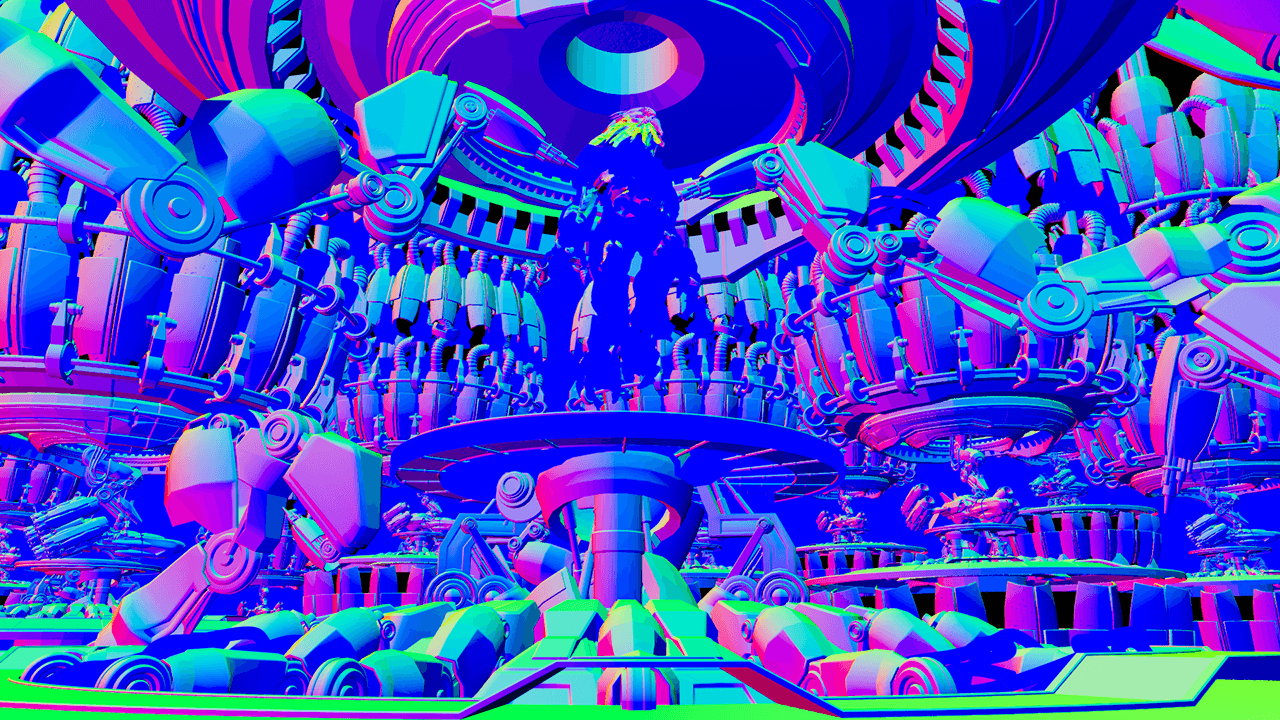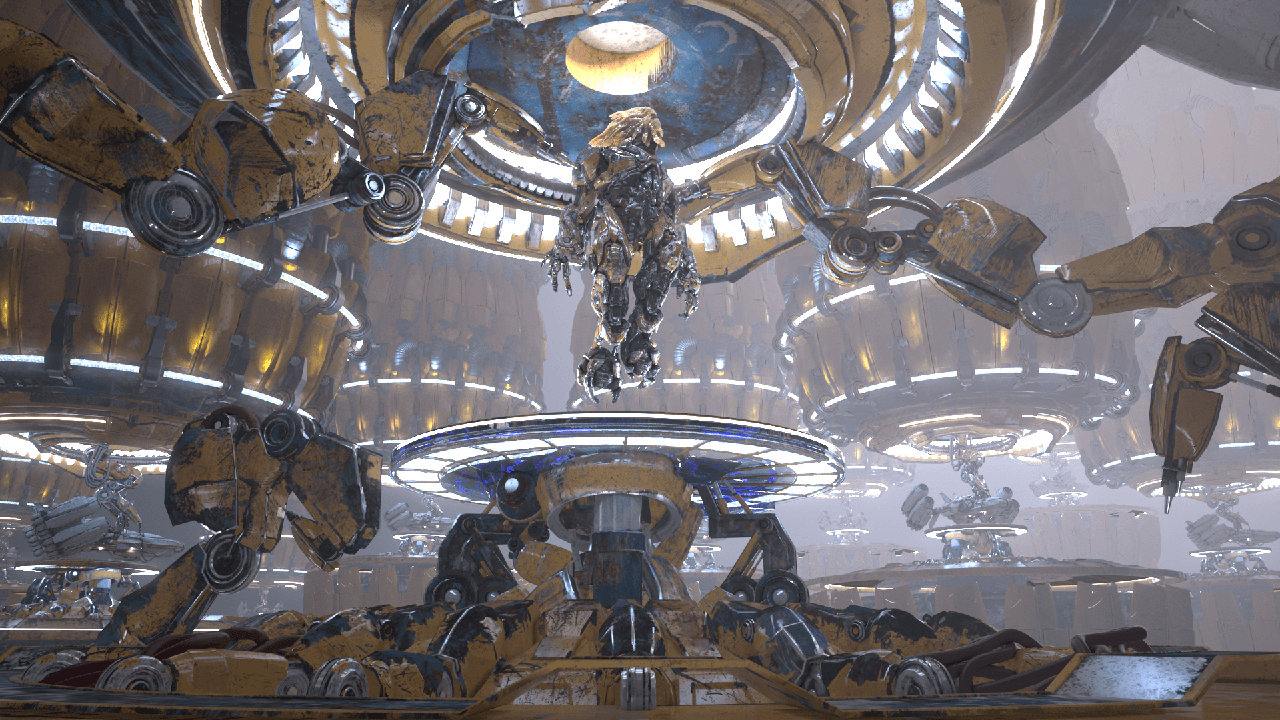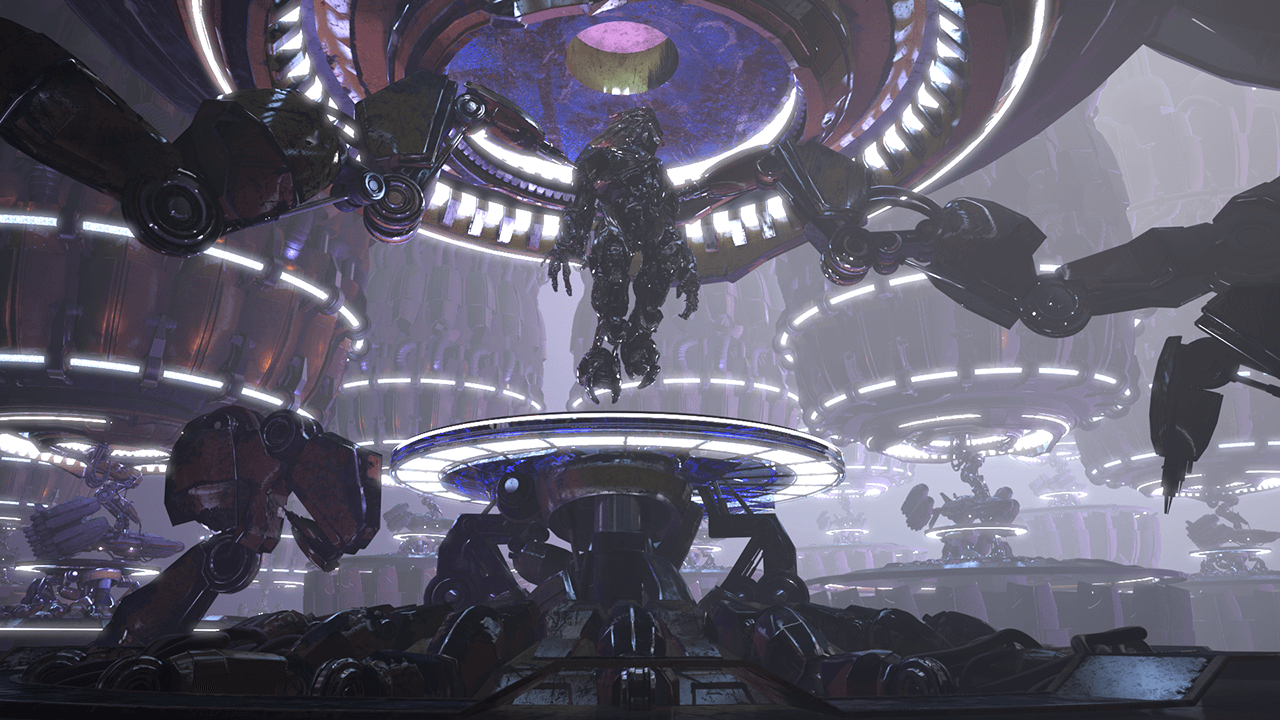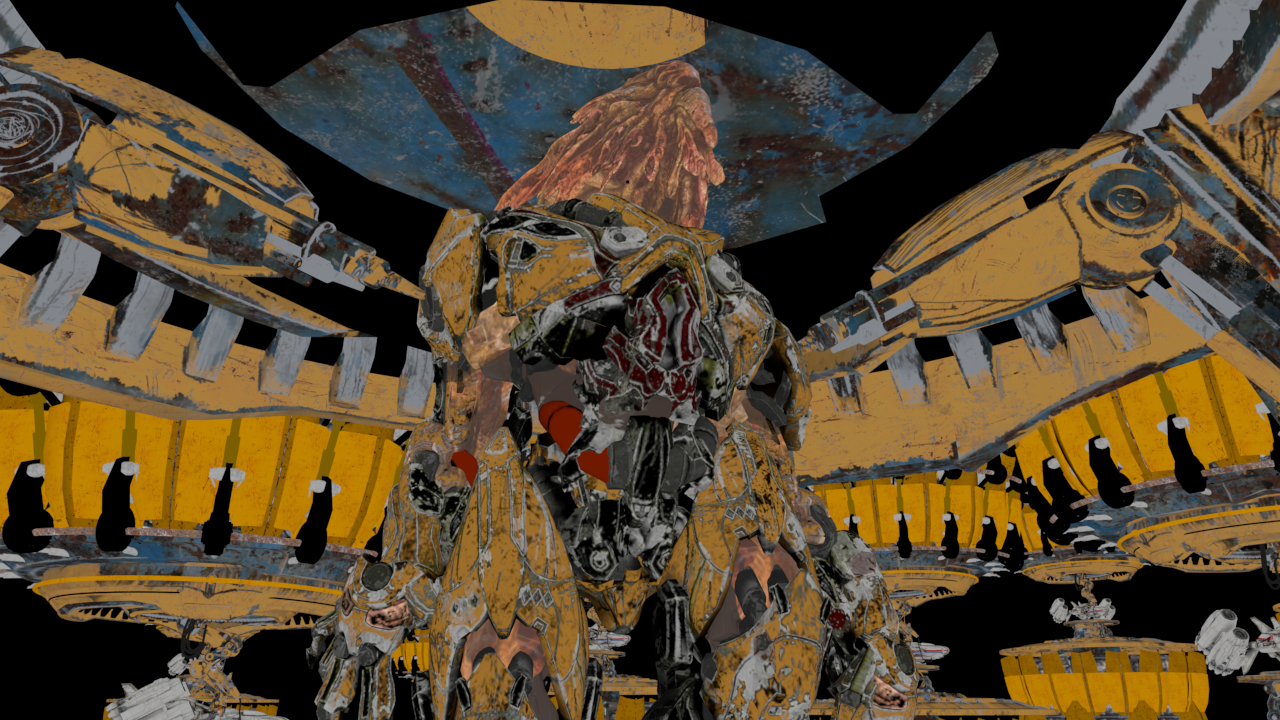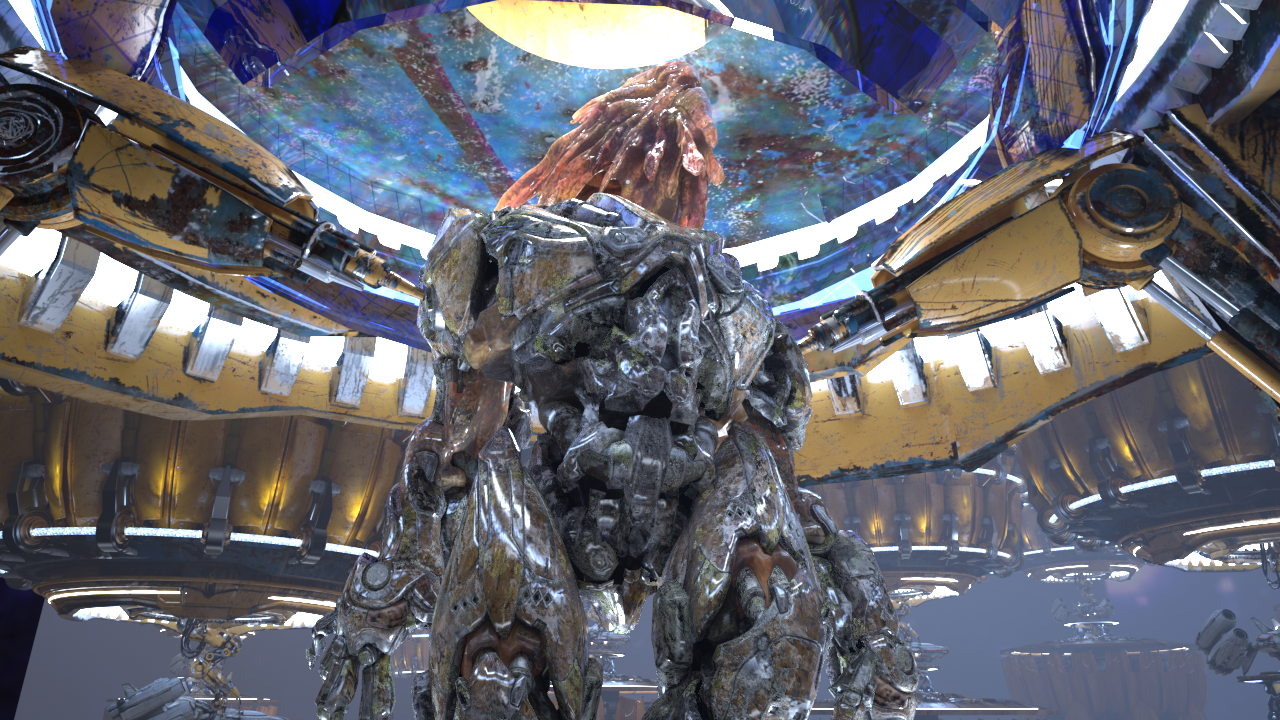This page provides information on the Extra Tex Node in V-Ray for Blender.
Overview
The Extra Texture Render Channel shows the rendered image with a single texture applied to all objects in the scene. The texture applied to the scene can be a bitmap or a procedural texture.
A common use for ExtraTex is to use Dirt as the texture, which creates an ambient occlusion element for use in the composite. In this way, ambient occlusion can be controlled separately during the compositing process.
While a similar result to the ExtraTex render channel can be obtained by applying the same texture to all objects in the scene and rendering, as usual, such an approach requires additional time spent on reverting to actual materials, saving different versions of the scene, etc. The ExtraTex render channel provides a quick and easy way to render the scene with a single texture without the extra work.
UI Path
||Node Editor|| > Add > Render Channels > ExtraTex
Node
Name – The name of the render channel.
Affect Matte Objects – Controls whether or not matte objects will be present in the render element.
Filtering – Enables or disables the AA filtering for the current render channel.
Consider for AA – Allows you to enable or disable the the sampling of the current render channel for antialiasing.
Texmap – An input slot for a texture map.
Parameters
Affect Matte Objects – Controls whether or not matte objects will be present in the render element.
Consider for AA – When enabled, anti-aliasing is used where possible.
Exclude list as inclusive set – Inverts the effect of the Exlude List parameter, making it an inclusive set.
Filtering – Enables or disables the AA filtering for the current render channel.
Name – The name of the render channel.
Sample Usage
Common Uses - Relighting With the World Point Position and Bump Normals
Bump Normals and World Positions Render Elements are useful for changing the appearance of lighting in a scene in a composite without the need for re-rendering. The example below is a lighting workflow that is used at a composite level to change the lighting in the scene. Note that it does not create any extra shadowing or GI. While the Bump Normal Render Element provides information about how lights will affect each surface; the Point Position element passes the spatial location of each pixel. When used together it allows lights added in composite to react on the pixels as if they were the surface of the model.
Common Uses - UV Element Retexturing
By using the SamplerInfo texture with Extra Tex, a Render Element can be created to replace objects texture during compositing without the need to re-render the scene.
Common Uses - Ambient Occlusion
Dirt is useful for changing the appearance of a render in a compositing or image editing software.
Notes
- Filtering and AA are only applied to extraTex when Type is set to Texture. When Type is set to Float texture or Int texture, for pixels where multiple objects are visible, the object that most contributes to that pixel has its ID stored. This is to prevent the mask from breaking around the edges of the objects.


